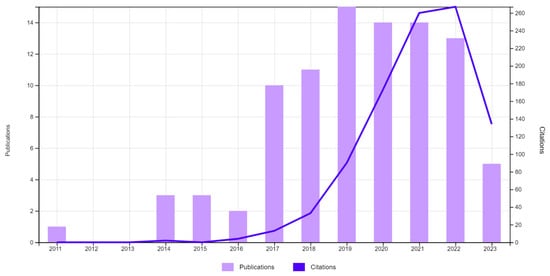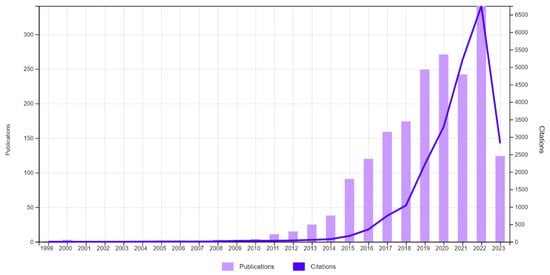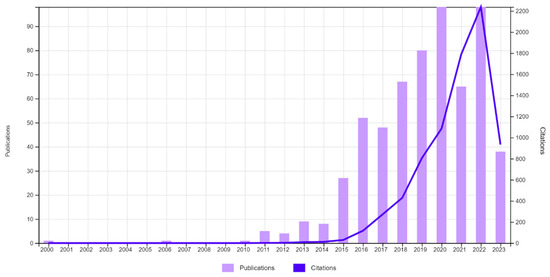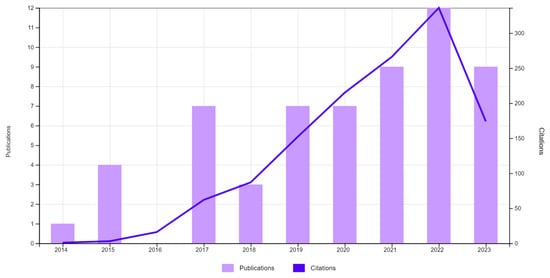
| Version | Summary | Created by | Modification | Content Size | Created at | Operation |
|---|---|---|---|---|---|---|
| 1 | Gabriel Marín Díaz | -- | 2175 | 2023-08-17 10:16:04 | | | |
| 2 | Dean Liu | Meta information modification | 2175 | 2023-08-18 02:39:54 | | | | |
| 3 | Dean Liu | Meta information modification | 2175 | 2023-08-28 04:30:13 | | |
Video Upload Options
Due to the irruption of new technologies in cities such as mobile applications, geographic information systems, internet of things (IoT), Big Data, or artificial intelligence (AI), new approaches to citizen management are being developed. The primary goal is to adapt citizen services to this evolving technological environment, thereby enhancing the overall urban experience. These new services can enable city governments and businesses to offer their citizens a truly immersive experience that facilitates their day-to-day lives and ultimately improves their standard of living. In this arena, it is important to emphasize that all investments in infrastructure and technological developments in Smart Cities will be wasted if the citizens for whom they have been created eventually do not use them for whatever reason. To avoid these kinds of problems, the citizens’ level of adaptation to the technologies should be evaluated. However, although much has been studied about new technological developments, studies to validate the actual impact and user acceptance of these technological models are much more limited.
1. Recommender Systems
A recommender system is a type of computer system designed to suggest or recommend items to users, such as products, services, movies, music, news, or any other type of content, based on their preferences, past behaviors, or user profiles. The main goal of a recommender system is to provide personalized and relevant recommendations, to help users discover new items that may be of interest to them [1].

2. Smart Cities and Smart Tourism


3. Smart Cities, Smart Tourism, and Technology User Acceptance (TAM)

| Year | Title |
|---|---|
| 2018 | Framing a Smart Service with Living Lab Approach: A Case of Introducing Mobile Service within 4G for Smart Tourism in Taiwan [8]. |
| 2019 | The Augmented Reality in Lisbon Tourism Proposal for a AR Technology Adoption Model [9]. |
| 2020 | The Role of Human–Machine Interactive Devices for Post-COVID-19 Innovative Sustainable Tourism in Ho Chi Minh City, Vietnam [10]. |
| 2022 | Using UTAUT-3 to Understand the Adoption of Mobile Augmented Reality in Tourism (MART) [11]. |
| 2023 | Small-Town Citizens’ Technology Acceptance of Smart and Sustainable City Development [12]. |
4. Criteria for Measuring Technology User Acceptance
-
Frequency of Mobile Use (FMU): Some studies suggest that the frequency of mobile use is an important factor in technology acceptance models. This study [13], revealed that the perceived effectiveness and perceived convenience of mobile applications were impacted by crucial security elements. In this other study [14], the research discovered that both the perceived simplicity of usage and the portability aspects had a considerable impact on the perceived usefulness of mobile health services. In [15], it was revealed that the perceived level of physical risk and key factors from the TAM were strong indicators of individuals’ intentions to use mobile applications for online transportation services. Finally, in [15], it was demonstrated that mobile social media usage exerted a substantial indirect influence on online business models. This influence was mediated by the TAM, emphasizing its critical role in the frequency of mobile use.
-
Mobile App Usage (MAU): After a deep analysis of the existent literature, it can be highlighted that the impact of the mobile apps usage has directly influenced the TAM and that mobile app usage has had a positive impact on teacher performance and learning capabilities [16]. In this other study [17], it was observed that the perceived ease of use and perceived usefulness of mobile apps positively affected hotel consumers’ experiences. Additionally, it is highlighted that perceived usefulness, along with user experience, played a significant role in influencing customers’ acceptance of hotel apps. The papers suggest that TAM can be used to investigate the impact of mobile app usage in various contexts, such as education, hospitality, and conferences.
-
Digital Competence (DC): The literature suggests that digital competence directly affects technology acceptance models. This study [18], incorporates technology readiness into the TAM and identifies that the influence of technology readiness on use intention is mediated by the perceptions of usefulness and ease of use. In other words, the impact of an individual’s technological readiness on their intention to use a particular technology is influenced by how they perceive its usefulness and ease of use. In the same vein [19], extends the TAM by incorporating two types of perceived usefulness and reveals that perceived near-term usefulness has the most significant influence on the behavioral intention to use a technology. However, it is worth noting that perceived long-term usefulness also exerts a positive impact on the intention to use the technology, albeit to a lesser extent.
-
Attitude towards Technology (ATT): This criterion is an important factor in technology acceptance models, its significance lies in gauging the emotional and cognitive responses of users, capturing their perceptions, beliefs, and attitudes towards technology. In [20], it was found that awareness and perceived risk are external variables that affect the technology acceptance model for mobile banking in Yemen. On another hand, in this study [21], the research indicated that attitude served as a significant predictor of university students’ intention to use e-learning, drawing from the TAM;
-
Perceived Usefulness (PU) and Perceived Ease of Use (PEU): These two variables have been deeply considered and analyzed by authors who collectively suggest that perceived usefulness is an important factor in the TAM. In [22], it was discovered that perceived usability holds crucial importance in the TAM and that its presence explains a greater amount of variance in the model compared to its absence. In [23], it was found that perceived ease-of-use (PEU) is strongly related to perceived usability, which is a component of the modified TAM (mTAM). However, Ref. [24] proposed a theoretical model that suggests perceived ease of use is determined by control, intrinsic motivation, and emotion, and that it adjusts over time to reflect objective usability and perceptions of external control. This suggests that perceived usability may be more complex than simply incorporating it into the TAM. In this arena, many works suggest that perceived usefulness is a key factor in the TAM, but the relationship between perceived usability and TAM may require further investigation.
-
Social Media Usage (SMU): The literature suggest that the TAM can be used to understand social media usage behavior. In this paper [25], interesting results highlighting the relationship between TAM and social media usage were found. The author found that the individual adoption behavior of Facebook can be explained by its perceived ease of use, critical mass, and social networking site capability. In a study conducted by Al-Qaysi [26], the author conducted a thorough systematic review, analyzing 57 research articles. The findings indicated that several factors significantly extended the TAM, among the most frequent factors were social media, perceived enjoyment, subjective norm, self-efficacy, perceived critical mass, perceived connectedness, perceived security, and perceived trust. In the same vein, in this other study [11], the digital gap that might exist across different generations was delved into and it was uncovered that age plays a significant role in influencing the optimism, innovativeness, and perceived usefulness concerning the adoption of social media. Finally, study [27] constructed a comprehensive model to investigate the influence of social-media-use factors on electronic banking adoption. They observed a notable negative impact of the social media factor on the expected efforts, which, in turn, affected the use of electronic banking services.
-
Previous Experience (PE): The last criterion identified in this study is previous experience. In study [28], a meta-analysis of TAM was conducted which found that subjective norm (such as experience) has a significant influence on perceived usefulness and the behavioral intention to use any technology. On the other hand, in study [29], out a literature review of the technology acceptance models was carried out, and it was evident that these models play a vital role in comprehending the predictors of human behavior concerning the potential adoption or rejection of innovations and technologies. Finally, and in the same arena, in study [30], a research plan dedicated to exploring prospective interventions both before and after IT implementation was outlined, aiming to improve employees’ acceptance and utilization of technology. Moreover, the studies suggest that prior experiences could influence technology acceptance models, and leveraging this criterion can foster technology adoption and utilization.
References
- Figueroa, C.; Vagliano, I.; Rocha, O.R.; Morisio, M. A systematic literature review of Linked Data-based recommender systems. Concurr. Comput. Pr. Exp. 2015, 27, 4659–4684.
- Lex, E.; Schedl, M. Psychology-informed Recommender Systems Tutorial. In Proceedings of the Sixteenth ACM Conference on Recommender Systems, Seattle, WA, USA, 18–23 September 2022; pp. 714–717.
- Quijano-Sánchez, L.; Cantador, I.; Cortés-Cediel, M.E.; Gil, O. Recommender systems for smart cities. Inf. Syst. 2020, 92, 101545.
- Corte, V.; D’andrea, C.; Savastano, I.; Zamparelli, P. Smart Cities and Destination Management: Impacts and Opportunities for Tourism Competitiveness. Eur. J. Tour. Res. 2017, 17, 7–27.
- Um, T.; Chung, N. Does smart tourism technology matter? Lessons from three smart tourism cities in South Korea. Asia Pac. J. Tour. Res. 2021, 26, 396–414.
- Buhalis, D. Technology in tourism-from information communication technologies to eTourism and smart tourism towards ambient intelligence tourism: A perspective article. Tour. Rev. 2020, 75, 267–272.
- Tsai-Lin, T.-F.; Chang, Y.-Y. Framing a Smart Service with Living Lab Approach: A Case of Introducing Mobile Service within 4G for Smart Tourism in Taiwan. In Proceedings of the 2018 IEEE International Conference on Engineering, Technology and Innovation (ICE/ITMC), Stuttgart, Germany, 17–20 June 2018; pp. 1–9.
- Azevedo, J.N.; Alturas, B. The Augmented Reality in Lisbon Tourism Proposal for a AR Technology Adoption Model. In Proceedings of the 2019 14th Iberian Conference on Information Systems and Technologies (CISTI), Coimbra, Portugal, 19–22 June 2019.
- Van, N.T.T.; Vrana, V.; Duy, N.T.; Minh, D.X.H.; Dzung, P.T.; Mondal, S.R.; Das, S. The Role of Human–Machine Interactive Devices for Post-COVID-19 Innovative Sustainable Tourism in Ho Chi Minh City, Vietnam. Sustainability 2020, 12, 9523.
- Pinto, A.S.; Abreu, A.; Costa, E.; Paiva, J. Using UTAUT-3 to Understand the Adoption of Mobile Augmented Reality in Tourism (MART). In Advances in Tourism, Technology and Systems; Springer: Singapore, 2022; Volume 284, pp. 373–384.
- Baldi, G.; Megaro, A.; Carrubbo, L. Small-Town Citizens’ Technology Acceptance of Smart and Sustainable City Development. Sustainability 2022, 15, 325.
- Chi, Y.-L.; Tsai, Y.-C. The empirical study of impact critical security factors of mobile applications on technology acceptance model. J. Stat. Manag. Syst. 2017, 20, 245–273.
- El-Wajeeh, M.; Galal-Edeen, P.G.H.; Mokhtar, D.H. Technology Acceptance Model for Mobile Health Systems. IOSR J. Mob. Comput. Appl. 2014, 1, 21–33.
- Ikhsan, K. Technology Acceptance Model, Social Influence and Perceived Risk in Using Mobile Applications: Empirical Evidence in Online Transportation in Indonesia. J. Din. Manaj. 2020, 11, 127–138.
- Tangri, K.; Joghee, S.; Kalra, D.; Shameem, B.; Agarwal, R. Assessment of Perception of Usage of Mobile Social Media on Online Business Model through Technological Acceptance Model (TAM) and Structural Equation Modeling (SEM). In Proceedings of the 2023 International Conference on Business Analytics for Technology and Security (ICBATS), Dubai, United Arab Emirates, 7–8 March 2023; pp. 1–6.
- Saif, N.; Khan, I.U.; Khan, G.A. Investigating the Impact of Mobile Application on Learning Among Teachers Based on Technology Acceptance Model (TAM). Glob. Educ. Stud. Rev. 2020, V, 45–54.
- Huang, Y.-C.; Chang, L.L.; Yu, C.-P.; Chen, J. Examining an extended technology acceptance model with experience construct on hotel consumers’ adoption of mobile applications. J. Hosp. Mark. Manag. 2019, 28, 957–980.
- Lin, C.-H.; Shih, H.-Y.; Sher, P.J. Integrating technology readiness into technology acceptance: The TRAM model. Psychol. Mark. 2007, 24, 641–657.
- Chau, P.Y.K. An Empirical Assessment of a Modified Technology Acceptance Model. J. Manag. Inf. Syst. 1996, 13, 185–204.
- Isaac, O.; Mutahar, A.M.; Daud, N.M.; Ramayah, T.; Aldholay, A.H. The effect of awareness and perceived risk on the technology acceptance model (TAM): Mobile banking in Yemen. Int. J. Serv. Stand. 2018, 12, 180.
- Hussein, Z. Leading to Intention: The Role of Attitude in Relation to Technology Acceptance Model in E-Learning. Procedia Comput. Sci. 2017, 105, 159–164.
- Holden, H.; Rada, R. Understanding the Influence of Perceived Usability and Technology Self-Efficacy on Teachers’ Technology Acceptance. J. Res. Technol. Educ. 2011, 43, 343–367.
- Lah, U.; Lewis, J.R.; Šumak, B. Perceived Usability and the Modified Technology Acceptance Model. Int. J. Human Computer Interact. 2020, 36, 1216–1230.
- Venkatesh, V. Determinants of Perceived Ease of Use: Integrating Control, Intrinsic Motivation, and Emotion into the Technology Acceptance Model. Inf. Syst. Res. 2000, 11, 342–365.
- Rauniar, R.; Rawski, G.; Yang, J.; Johnson, B. Technology acceptance model (TAM) and social media usage: An empirical study on Facebook. J. Enterp. Inf. Manag. 2014, 27, 6–30.
- Al-Qaysi, N.; Mohamad-Nordin, N.; Al-Emran, M. Employing the technology acceptance model in social media: A systematic review. Educ. Inf. Technol. 2020, 25, 4961–5002.
- Fedorko, I.; Fedorko, R.; Gavurova, B.; Bačík, R. Social media in the context of technology acceptance model. Entrep. Sustain. Issues 2021, 9, 519–528.
- Schepers, J.; Wetzels, M. A meta-analysis of the technology acceptance model: Investigating subjective norm and moderation effects. Inf. Manag. 2007, 44, 90–103.
- Al-Tarawneh, J.M. Technology Acceptance Models and Adoption of Innovations: A Literature Review. Int. J. Sci. Res. Publ. (IJSRP) 2019, 9, 833–857.
- Venkatesh, V.; Bala, H. Technology Acceptance Model 3 and a Research Agenda on Interventions Subject Areas: Design Characteristics, Interventions. Decis. Sci. 2008, 39, 273–315. Available online: http://www.vvenkatesh.com/wp-content/uploads/2015/11/Venkatesh_Bala_DS_2008.pdf (accessed on 4 July 2023).




